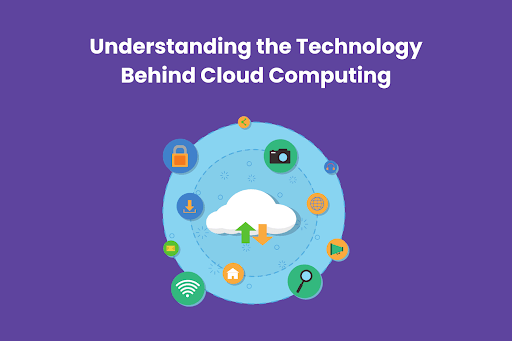[ad_1]
In the digital age, where data is the new currency, cloud computing stands as the backbone of technological innovation. But, How does Cloud Computing Work? How does it seamlessly manage vast amounts of data, applications, and services? In this blog, we explore the technology behind cloud computing, its intricacies and shedding light on the role of Cloud Computing Courses & Training in demystifying the magic of the cloud.
Table of Contents
- How Does Cloud Computing Work?
- Infrastructure as a Service (IaaS)
- Platform as a Service (PaaS)
- Software as a Service (SaaS)
- Cloud Deployment Models
- Key Components of Cloud Computing Technology
- Conclusion
How Does Cloud Computing Work?
Virtualization is the technology that allows the production of virtual instances of computer resources; it is the backbone of cloud computing. It is possible to maximise resource utilisation through virtualisation by running several virtual computers (VMs) on a single physical server. The scalability and flexibility of cloud services are based on this essential principle.
Infrastructure as a Service (IaaS)
Infrastructure as a service (IaaS) is a cornerstone of cloud computing’s service models. It offers online access to virtualized computer resources. On an as-needed basis, customers may access storage, virtual computers, and networking components using IaaS. Customers can concentrate on application deployment and management by letting cloud providers handle the underlying infrastructure.
Platform as a Service (PaaS)
PaaS goes beyond infrastructure abstraction by offering a platform that incorporates the underlying infrastructure and the tools and services required for application development and deployment. Platform as a service (PaaS) streamlines development by providing a pre-built environment that supports the whole application lifecycle.
Software as a Service (SaaS)
Software as a service (SaaS) is the cloud computing tier that prioritises the needs of end users by providing subscription-based application delivery via the Internet. No installation or maintenance on the user’s part is required to access the program. Some well-known examples include Salesforce, Microsoft 365, and Google Workspace. Software as a service (SaaS) simplifies software administration and makes it easy for users.
Cloud Deployment Models
With cloud computing, businesses may choose from a variety of deployment strategies to meet their specific requirements:
- Public Cloud: Services are provided over the Internet and shared among multiple organizations. Many applications may benefit from public clouds because of their scalability and cost-effectiveness.
- Private Cloud: Resources are dedicated to a single organization, offering enhanced control and security. Private clouds are the way to go for companies with stringent compliance needs or who want more customisation options.
- Hybrid Cloud: Combining elements of both public and private clouds, the hybrid model allows data and applications to be shared between them. Companies whose workloads are unpredictable or subject to change can benefit from this adaptability.
Key Components of Cloud Computing Technology
These are the Key Components of Cloud Computing Technology:
- Data Centers: Data centres are the backbone of the cloud, housing all of the necessary servers, storage, and networking gear. The actual gear that drives virtualized computing resources is housed in these data centres.
- Networking: Networking is essential to facilitate the free movement of information across end users, programmes, and data repositories. Cloud providers use advanced networking technology to maximise performance and guarantee a consistent connection.
- Storage: The use of cloud storage systems allows for the efficient and economical management of massive data sets. Cloud storage is an essential component of cloud computing, serving several purposes, such as object storage for files and multimedia and block storage for programs.
- Compute Resources: The computing resources in the cloud are virtual machines, containers, and serverless computing. By facilitating the effective distribution and use of computing resources, these technologies meet the demands of a wide range of applications.
- Automation and Orchestration: Efficiency in the cloud is greatly enhanced by automation. Automation helps cloud providers simplify resource management, scalability, and provisioning. To accomplish certain goals, orchestration ensures that several automated processes are coordinated.
- The Future of Cloud Computing: Cloud computing adapts to new technologies. The cloud is transforming due to new developments, including serverless architectures, sophisticated AI integration, and edge computing. As new developments emerge in the cloud, education in the field is adapting to help professionals take advantage of everything the technology offers.
Conclusion
Professionals navigating the digital world must understand the technologies underpinning cloud computing. The complexities of virtualization, service models, and deployment choices may be better understood with the help of cloud computing courses and training.
Training professionals to fully use cloud computing is becoming more important as more and more organisations adopt cloud computing for its scalability, flexibility, and creativity.
[ad_2]
Source link






